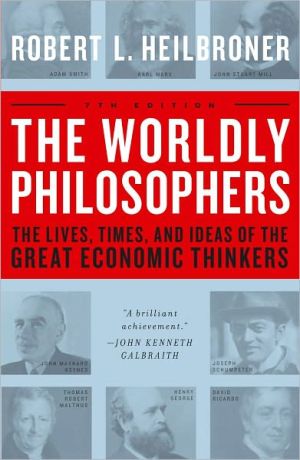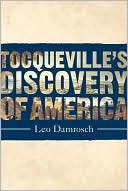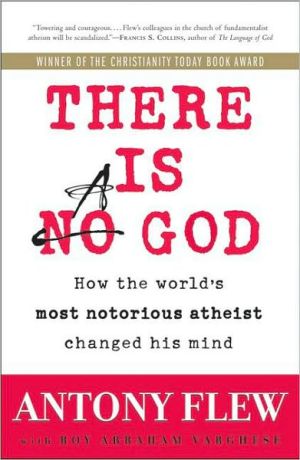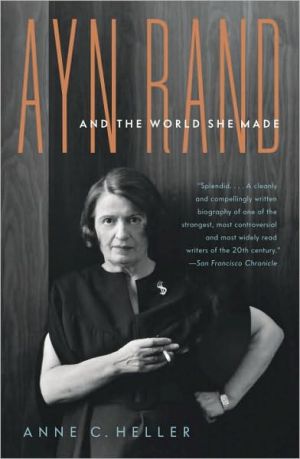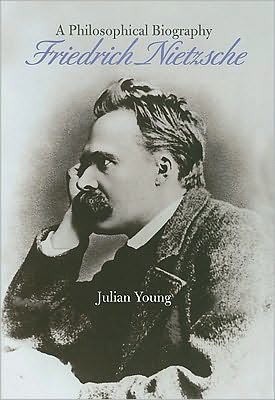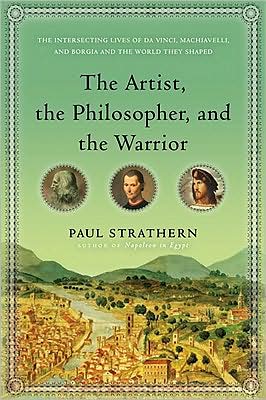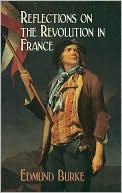Giordano Bruno: Philosopher Heretic
Giordano Bruno (1548–1600) is one of the great figures of early modern Europe, and one of the least understood. Ingrid D. Rowland’s biography establishes him once and for all as a peer of Erasmus, Shakespeare, and Galileo—a thinker whose vision of the world prefigures ours.\ \ Writing with great verve and erudition, Rowland traces Bruno’s wanderings through a sixteenth-century Europe where every certainty of religion and philosophy has been called into question, and reveals how he...
Search in google:
Giordano Bruno (1548–1600) is one of the great figures of early modern Europe, and one of the least understood. Ingrid D. Rowland’s biography establishes him once and for all as a peer of Erasmus, Shakespeare, and Galileo—a thinker whose vision of the world prefigures ours. Writing with great verve and erudition, Rowland traces Bruno’s wanderings through a sixteenth-century Europe where every certainty of religion and philosophy has been called into question, and reveals how he valiantly defended his ideas to the very end, when he was burned at the stake as a heretic on Rome’s Campo de’ Fiori. “A loving and thoughtful account of [Bruno’s] life and thought, satires and sonnets, dialogues and lesson plans, vagabond days and star-spangled nights. . . . Ingrid D. Rowland has her reasons for preferring Bruno to Copernicus, Tycho Brahe, Johannes Kepler, even Galileo and Leonardo, and they’re good ones.”—John Leonard, Harper’s “Whatever else Bruno was, he was wild-minded and extreme, and Rowland communicates this, together with a sense of the excitement that his ideas gave him. . . . It’s that feeling for the explosiveness of the period, and [Rowland’s] admiration of Bruno for participating in it—indeed, dying for it—that is the central and most cherishable quality of the biography.”—Joan Acocella, New Yorker “Rowland tells this great story in moving, vivid prose, concentrating as much on Bruno’s thought as on his life. . . . His restless mind, as she makes clear, not only explored but transformed the heavens.”—Anthony Grafton, New York Review of Books “[Bruno] seems to have been an unclassifiable mixture of foul-mouthed Neapolitan mountebank, loquacious poet, religious reformer, scholastic philosopher, and slightly wacky astronomer.”—Anthony Gottlieb, New York Times Book Review “A marvelous feat of scholarship. . . . This is intellectual biography at its best.”—Peter N. Miller, New Republic “An excellent starting point for anyone who wants to rediscover the historical figure concealed beneath the cowl on Campo de’ Fiori.”—Paula Findlen, Nation The Washington Post - Marc Kaufman Giordano Bruno: Philosopher/Heretic gives some support to the view of Bruno as a visionary of and martyr to science, but Rowland, who teaches in Notre Dame's school of architecture in Rome and writes about Italian cultural history, knows too much about him and his times to accept that simple picture. Rather, she tells the story of a bright, thin-skinned, rebellious and inquisitive young man from outside Naples who became a precocious Dominican priest, had some original thoughts, wrote some interesting treatises and long poems, and pretty quickly got in trouble with the authorities.
Prologue: The Hooded Friar \ February 17 marks a peculiarly Roman holiday whose ritual centers on the bronze statue of a hooded friar. Just over life size, clutching a book in manacled hands, he glowers over the marketplace of Campo de’ Fiori, the "Field of Flowers" that was also, for many years, one of the city’s execution grounds. The statue was meant to point in the opposite direction, facing the sun, but a last-minute decision by the City Council of Rome in 1889 turned it around to face the Vatican, which had complained that the original placement was disrespectful. Because of this change in position, the friar’s face is always shadowed, so that he looks more melancholy than defiant. But then, he is a man condemned to die by burning at the stake; he has every reason to be melancholy.\ For at least five hundred years, Roman statues have been champions of free speech; three blocks from the Campo de’ Fiori, an ancient marble wreck of two torsos and a noseless head named Mastro Pasquino has been papered with acid comments on Roman life ever since the first years of the sixteenth century. From satires of the Borgia pope, Alexander VI, he has moved on to hurling invectives against the current prime minister, and for many years a spray-painted feminist graffito on his base proclaimed him Pasquina.\ Down the street in the other direction, a togaed ancient Roman called Abbot Luigi (Abate Luigi) has been talking nearly as long as Pasquino; the removal of his grizzled old head by a thief in the 1970s failed to stop his chatter, and he has long since been recapitated with the portrait of some other stern old senator, one no less pleased to speak his mindwithout inhibition to latter-day Romans. The friar in the Campo de’ Fiori makes a worthy companion to this vocal pair, and to their more distant colleagues Madama Lucrezia and Marforio, both of whom, sadly, have been dumbstruck by modern life: Madama Lucrezia may have begun as the cult image of Isis in ancient Rome’s most elaborate Egyptian temple, but she now lords it over a bus stop in Piazza Venezia, while handsome Marforio, a strapping Roman river god, is shut up in the Capitoline Museum, where no one can reach him any longer to give him a paper voice. Instead, Giordano Bruno, the friar of Campo de’ Fiori, must now speak for them both. And he does, in letters of bronze on his granite pedestal: "To Bruno, from the generation he foresaw, here, where the pyre burned."\ That generation, the first student generation of the newly created Italian state, commissioned the statue in the 1880s from the sculptor Ettore Ferrari, supported by an international subscription campaign. Italy’s formation had hinged on seizing political control of Rome and its territories from the governmental dominion of the papacy, and hence the monument to Bruno thumbed its nose at the pope with spectacular impudence by paying tribute to one of the Inquisition’s most illustrious victims—and reminded the Vatican just why this new Italy had chosen so eagerly to become a secular state.\ The Roman students chose Bruno as their patron martyr not only for his bravery but also for his ideas; more boldly than anyone in his age, including Kepler and Galileo, he had declared that the universe was made of atoms and that it was infinite in size. His violent, public death for those convictions showed the Catholic Church in its most cruelly repressive light, for Bruno had not been a political man, nor had he committed any crime except to speak his mind. For the students of a new Italy and a newly independent Rome, the statue was meant to prove that ideas can and must prevail over the attempt to stifle them.\ To this day, then, on the morning of February 17, a contingent from City Hall places a wreath at the bronze Bruno’s feet, its laurel leaves draped in red and gold ribbons, the initials "SPQR"embossed in gold letters. By laying a wreath at Bruno’s feet, the mayor of Rome continues to assert the modern city’s independence from a temporal Church. The process usually displaces an early drinker or two, and as floral offerings pile up around the wreath, together with poems, candles, and invectives, they stay displaced. Late in the afternoon, when the market stalls have been taken down and squirreled away in side streets, the Italian Association of Free Thinkers sets up a microphone at Bruno’s feet; meanwhile, the atheists and the pantheists, carefully separated from each other, lay out their tables of books and leaflets on opposite sides of the piazza. In between them, the Free Thinkers guard their microphone jealously, wresting it in turn from the man in the sandwich board who claims to be Giordano Bruno incarnate, from the tipplers who use the statue’s base as a convenient perch, from the students, artists, and enthusiasts who think—wrongly, as it turns out—that free thought implies free speech. This microphone is only for organizations, the Free Thinkers declare to all their competitors for the space beneath Giordano’s lowering gaze: the Masons, the atheists, and the pantheists, all of whom claim the hooded friar as their very own spiritual leader. Brooding and silent above the fray, steadfast above the dispute between the believers in no god and the believers in all gods, the bronze Giordano Bruno glares at the distant Vatican, which put the real Giordano Bruno to death here in the Campo de’ Fiori on February 17, 1600, for obstinate and pertinacious heresy.\ By evening, Ettore Ferrari’s statue will be covered with offerings, as if Giordano Bruno were a miracle-working saint rather than a condemned heretic.\ Since the statue’s dedication, Bruno’s reputation has undergone several new transformations. If late-nineteenth-century Italians saw him as an apostle of modern science, a pair of mid-twentieth-century scholars at the Warburg Institute in London, Frances Yates and D. P. Walker, recast him as a religious reformer, a mystic, and a practitioner of magic; Giovanni Aquilecchia, their younger contemporary in London, waited years to see Bruno the magician give way to more general acceptance of his own view of Bruno as a philosopher. However diverse their portraits of Bruno, Yates and Aquilecchia were both remarkable writers and teachers who drew a surprisingly wide range of new readers to the Italian heretic. In the mid-1980s, Bruno was still regarded as a marginal figure, and only a handful of books had been dedicated to him since the great burst of interest in the late nineteenth century; a decade later, Giordano had acquired his own periodical, Bruniana & Campanelliana, several institutions (including a convent of Dominican nuns in Utrecht) bearing his name, and a remarkable degree of public interest that culminated in widespread commemorations of the four hundredth anniversary of his death—which coincided, by a four-hundred-year-old design, with the great jubilee proclaimed for the Catholic Church by Pope John Paul II. (Bruno’s burning had been deliberately set by Pope Clement VIII for the jubilee of 1600.) In recent years, the people who leave flowers on the statue in Campo de’ Fiori (and not only on February 17) come from around the world. Their interests in Bruno range as widely as his own writings, from pragmatic observation to rapturous mysticism, from appreciation of his complex prose to uncomplicated admiration for his courage in the defense of free thought.\ Ferrari’s heroic, imposing Bruno is anything but realistic: Bruno had not worn a Dominican habit for twenty-four years when he was marched off to the stake; indeed, as a final indignity, he was stripped naked before he burned. There are no surviving portraits of the gaunt little man who by that time had spent eight years in inquisitorial prison, only a report of his fierce expression; Ferrari’s robust image reflects the man’s spirit, not his body. And its placement obeys the laws of urban design rather than historical accuracy: Bruno died in the southwest corner of the piazza, toward Piazza Farnese, not its center, despite the statue’s declaration "Here, where the pyre burned."Somber as it is, Ferrari’s hooded friar has succeeded so well because he captures the sheer challenge that Bruno posed for his times, a challenge that has lost none of its power since 1600, or 1889. The devout Galileo has been rehabilitated by the church that condemned him to silence in 1633; his offending Dialogue Concerning the Two Chief World Systems was reprinted with papal approval as early as 1712, and he was officially pardoned by Pope John Paul II in 1983. But as the anniversary of Bruno’s death loomed over the Roman jubilee year of 2000, John Paul declared, through two cardinals, Angelo Sodano and Paul Poupard, that Bruno had deviated too far from Christian doctrine to be granted Christian pardon. The inquisitors who put the philosopher to his gruesome death, the cardinals added, should be judged in the light of their gruesome times. As Sodano noted, in what was obviously a carefully worded document: "It is not our place to express judgments about the conscience of those who were involved in this matter. Objectively, nonetheless, certain aspects of these procedures and in particular their violent result at the hand of civil authority, in this and analogous cases, cannot but constitute a cause for profound regret on the part of the Church."\ As a child of those same gruesome times, Giordano Bruno asserted that in the end even the devils would be pardoned and that religious strife, with its human claim to see through God’s eyes, was the most misguided strife of all. Despite the optimism of the Roman students who erected his monument in Campo de’ Fiori, in many respects the generation he foresaw still belongs to the future.\ Bruno poses no less formidable a challenge to historians of science. Working without instrumentation, posing thought problems that reflected both ancient and modern ideas about natural philosophy, he fits uncomfortably into any scheme that aims to trace scientific thought in a neat line from Copernicus through Galileo, Newton, Maxwell, and Einstein. He was, perhaps, more of a poet than an empirical observer. Yet his intellectual contradictions, his blind spots, and his insights serve as a reminder that scientific investigation has always depended on inspiration as well as investigation, on mistakes as well as triumphs.\ Above all, Giordano Bruno defies any kind of summary judgment; his life, his ideas, and his personality are as complex as his times are distant from our own. He could be charming or infuriating, charismatic or repellent. For all his faults, however, he was brave and brilliant, and, as these pages aim to show, he was a splendid writer.\ Excerpted from Giordano Bruno by Ingrid D. Rowland.\ Copyright © 2008 by Ingrid D. Rowland\ Published in 2008 by Farrar, Straus and Giroux, LLC.\ All rights reserved. This work is protected under copyright laws and reproduction is strictly prohibited. Permission to reproduce the material in any manner or medium must be secured from the Publisher.
Prologue: The Hooded Friar 31 A Most Solemn Act of Justice 92 The Nolan Philosopher 143 "Napoli e tutto il mondo" 194 "The world is fine as it is" 255 "I have, in effect, harbored doubts" 296 "I came into this world to light a fire" 387 Footprints in the Forest 458 A Thousand Worlds 539 Art and Astronomy 6210 Trouble Again 7011 Holy Asininity 7712 The Signs of the Times 8713 A Lonely Sparrow 9614 Thirty 10415 The Gifts of the Magi 11616 The Song of Circe 13217 "Go up to Oxford" 13918 Down Risky Streets 14919 The Art of Magic 16020 Canticles 17321 Squaring the Circle 18822 Consolation and Valediction 19923 Infinities 21424 Return to Italy 22325 The Witness 24426 The Adversary 25127 Gethsemane 26328 Hell's Purgatory 26729 The Sentence 27230 The Field of Flowers 278Epilogue: The Four Rivers 279App Bruno's Sentence 287Notes 291Bibliography 307Acknowledgments 317Index 319
\ Harper's“A loving and thoughtful account of [Bruno’s] life and thought, satires and sonnets, dialogues and lesson plans, vagabond days and star-spangled nights. . . . Ingrid D. Rowland has her reasons for preferring Bruno to Copernicus, Tycho Brahe, Johannes Kepler, even Galileo and Leonardo, and they’re good ones.”\ — John Leonard\ \ \ \ \ \ New Yorker“Whatever else Bruno was, he was wild-minded and extreme, and Rowland communicates this, together with a sense of the excitement that his ideas gave him. . . . It’s that feeling for the explosiveness of the period, and [Rowland’s] admiration of Bruno for participating in it—indeed, dying for it—that is the central and most cherishable quality of the biography.”\ — Joan Acocella\ \ \ \ New York Review of Books“Rowland tells this great story in moving, vivid prose, concentrating as much on Bruno’s thought as on his life. . . . His restless mind, as she makes clear, not only explored but transformed the heavens.”\ — Anthony Grafton\ \ \ \ \ \ New Republic"In her provocative biography, a marvelous feat of scholarship, Ingrid D. Rowland brings before us today the pieces of an extraordinary sixteenth-century life. . . . This is intellectual biography at its best."\ — Peter N. Miller\ \ \ \ \ \ Nation"[Rowland's] lively and learned biography removes Bruno from myth and polemic . . . and restores him to the time and place that inspired his dual passion for knowledge as well as faith. She also offers a far richer and multidimensional account of Bruno's peculiar and complex intellectual itinerary than earlier scholars. . . . She takes us inside his head to see the interplay of theology, philosophy and poetry that shaped his worldview."\ — Paula Findlen\ \ \ \ \ \ H-Net Review"Informative, engaging, and accessible. . . . Rowland's Giordano Bruno deserves to be recognized for making Bruno's life—from his quiet birth in Nola to his wretched death in Rome—accessible to an Anglophone audience as never before."\ — David J. Collins\ \ \ \ \ \ Harper's“A loving and thoughtful account of [Bruno’s] life and thought, satires and sonnets, dialogues and lesson plans, vagabond days and star-spangled nights. . . . Ingrid D. Rowland has her reasons for preferring Bruno to Copernicus, Tycho Brahe, Johannes Kepler, even Galileo and Leonardo, and they’re good ones.”\ \ \ \ \ \ New Yorker“Whatever else Bruno was, he was wild-minded and extreme, and Rowland communicates this, together with a sense of the excitement that his ideas gave him. . . . It’s that feeling for the explosiveness of the period, and [Rowland’s] admiration of Bruno for participating in it—indeed, dying for it—that is the central and most cherishable quality of the biography.”\ \ \ \ \ \ New York Review of Books“Rowland tells this great story in moving, vivid prose, concentrating as much on Bruno’s thought as on his life. . . . His restless mind, as she makes clear, not only explored but transformed the heavens.”\ \ \ \ \ \ New Republic"In her provocative biography, a marvelous feat of scholarship, Ingrid D. Rowland brings before us today the pieces of an extraordinary sixteenth-century life. . . . This is intellectual biography at its best."\ \ \ \ \ \ Nation"[Rowland's] lively and learned biography removes Bruno from myth and polemic . . . and restores him to the time and place that inspired his dual passion for knowledge as well as faith. She also offers a far richer and multidimensional account of Bruno's peculiar and complex intellectual itinerary than earlier scholars. . . . She takes us inside his head to see the interplay of theology, philosophy and poetry that shaped his worldview."\ \ \ \ \ \ H-Net Review"Informative, engaging, and accessible. . . . Rowland's Giordano Bruno deserves to be recognized for making Bruno's life—from his quiet birth in Nola to his wretched death in Rome—accessible to an Anglophone audience as never before."\ \ \ \ \ \ Marc KaufmanGiordano Bruno: Philosopher/Heretic gives some support to the view of Bruno as a visionary of and martyr to science, but Rowland, who teaches in Notre Dame's school of architecture in Rome and writes about Italian cultural history, knows too much about him and his times to accept that simple picture. Rather, she tells the story of a bright, thin-skinned, rebellious and inquisitive young man from outside Naples who became a precocious Dominican priest, had some original thoughts, wrote some interesting treatises and long poems, and pretty quickly got in trouble with the authorities.\ —The Washington Post\ \ \ \ \ Publishers WeeklyYou sometimes hear the name Giordano Bruno (1548-1600) invoked as a prequel to the life of Galileo Galilei (1564-1642). These two natural philosophers, countrymen of the Italian peninsula, stood ready to shove the Earth from its ancient resting place and set it in orbit around the Sun. Though a rotating, revolving Earth challenged common sense and flew in the face of received wisdom, still they both embraced the idea-at their peril. The difference is that Bruno died for his beliefs (tied to a stake and set on fire in a public square in Rome), while Galileo recanted before the Inquisition and lived to advanced old age under house arrest. Legend connects their destinies, reducing Bruno's awful immolation to a cautionary tale that warns Galileo against too vigorous a defense of the dangerous new astronomy. But, as Ingrid Rowland makes clear in her probing, thoughtful biography, Bruno's support for the Sun-centered cosmos paled next to the rest of his crimes. He was a true heretic by the Catholic Church's definition, for he doubted the divinity of Jesus, the virginity of Mary and the transubstantiation of the Communion wafer into the body of Christ. Protestants-among whom Bruno lived for a time in Switzerland, France, Germany and England-also branded him a heretic, since he was, after all, a professed priest of the Dominican order. Bruno managed, in the span of his 52 years, to be excommunicated twice-from the Calvinist Church as well as the Catholic. Rowland identifies Bruno in her subtitle as philosopher and heretic. Her full text rounds out the list of his many other deserved epithets, including poet, playwright, private tutor, professor of sacred theology, linguist,master of the art of memory, even copy editor. As a philosopher, Bruno went far beyond the Sun-centered cosmology of Nicolaus Copernicus (1473-1543). Apparently the first man to envision infinity, Bruno posited an "endlessly renewed and recreated universe." Its limitless expanses of space knew no particular center, but contained innumerable suns, circled by a plurality of earths-and every one of them inhabited. Rowland's own translations of Bruno's many works, including On the Immense and the Numberless, add immeasurably to her portrait of him. In 1581 he described himself as having "the look of a lost soul... for the most part you'll see him irritated, recalcitrant, and strange, content with nothing, stubborn as an old man of eighty, skittish as a dog that has been whipped a thousand times, a weepy onion eater." "He came into the world to light a fire," Rowland acknowledges of her subject. That he did, and in the end it consumed him. 8 pages of b&W illus. (Aug.)Dava Sobel, the author of Longitude, Galileo's Daughter and The Planets, is at work on a play about Copernicus.Copyright © Reed Business Information, a division of Reed Elsevier Inc. All rights reserved.\ \ \ \ \ Kirkus ReviewsIntelligent biography of the renegade Italian friar burned at the stake in 1600 for his prodigious writings prefiguring modern science. Rowland (The Scarith of Scornello: A Tale of Renaissance Forgery, 2004, etc.) leavens her vast scholarly knowledge of Renaissance church history with a sprightly stylistic touch. Born in 1548 in a small city east of Naples, Bruno journeyed from the convent of San Domenico Maggiore through the exalted universities of Europe and England to test and deepen his theories of natural philosophy, with the Inquisition nipping at his heels all the while. From his first years as a Dominican friar, he entertained doubts about the "personhood" of Jesus, and his lack of reverence for the Catholic icons raised suspicions of Protestant leanings at a time when the Church was riven by the Reformation. Steeped in Aquinas, Aristotle and Plato, Bruno was also strongly influenced by the emotional rhetoric of Teofilo da Vairano and the Platonic philosophy of Marsilio Ficino, among others, and he delved into the Hebrew Kabbalah. Pursued by Venetian inquisitors for irreverence and harboring banned books, the exiled and excommunicated friar moved from Genoa to Geneva, Lyon to Paris, London to the Protestant German cities, teaching artificial memory, astrology, theology and mathematics, honing his philosophy. Finally, he discovered the work of German cardinal Nicolaus Cusanus, who proposed the idea that the universe might be infinitely large. In Bruno's poetic, atomic system, set out in On the Immense, he touched on the concept of infinite space and time, a "universal divine fertility" in which God was present everywhere. Returning to Venice in 1591, he was eventually denouncedby his employer and spent eight years in prison while the Inquisition debated what to do with him. When he was condemned to death, he replied menacingly, "You may be more afraid to bring that sentence against me than I am to accept it."Dense and elegantly erudite-a skillful, accessible analysis of complex systems of religion, philosophy and literature.\ \

